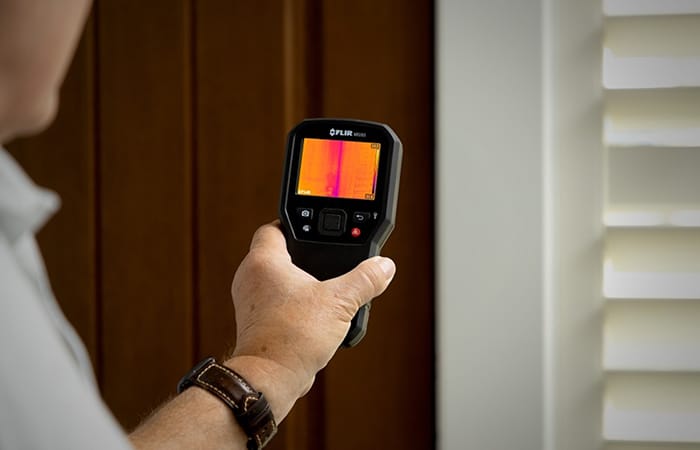If moisture plays a role in your industry, business, or operation, you need to know about moisture meters. In a nutshell, it’s the headline term for any instrument whose job it is to detect the moisture content of materials – especially wood, but also concrete and other materials including soil, wall materials, and even hay.

Building inspectors use one to write their reports about damp or water damage; carpenters and furniture makers use them to assess the properties of key materials and conditions; flooring professionals use them to make checks before laying down their products – and so on.
But to understand how moisture meters work, let alone begin the process of selecting the right product for your particular organization or a specific application, we’ll need to take a dive into the three basic meter types: pin moisture meters, pinless ones, and all-in-one moisture meters. (Luckily, you can get any of these types at a reliable supplier like RS Components).
Briefly:
Pin-type moisture meters feature contact pins that penetrate the surface to acquire the moisture level on the basis of simple electrical resistance.
Pinless meters make use of electromagnetic principles to take accurate readings by scanning rather than penetrating or otherwise disturbing the material. All-in-one moisture meters combine the two technologies in order to cover a wider spectrum of the user’s intended purposes.
What type do you need? We’ve broken down the explanation based on the most common applications across the spectrum of industry and business:
Large, hard, flat surface?
When you want to get an idea of moisture content across a larger surface area, such as a concrete floor prior to floor-covering work, a pinless meter is the best choice. That’s because no matter the material, including concrete, it’s just a matter of pressing the scanner onto the floor to get a reading, and then quickly repeating the process in other places to get a good idea of overall moisture content.
If a surface is very hard, the measuring pins will either damage or mark the material, or even break.
Uneven, loose surface/materials?
Where the pinless meters fall short is when surfaces are smaller, less consistent and even loosely packed. That’s where the pin-type moisture meters come into play, as the pins can be pressed into a less consistent or less firm material as opposed to needing to be firmly and evenly pressed onto it as with the pinless alternative.
Trying to scan loose surfaces with the pinless type can also give inaccurate readings because the moisture content of air between the surface components may also be mistakenly tested.
Delicate materials?
As hinted at above, pin-type meters need to be firmly and properly penetrated into the surface, which is no good if that material is easily marked or damaged – like an expensive hardwood floor.
Smaller surface?
For a very small or highly specific area, though, the best way to get a highly accurate reading is with a pin-type meter. That is because the pinless meter takes its measurement over the entire area of the scanning plate, while the reading is determined for the precise area and depth between the pins with the alternative technology.
Are you ready to select the right moisture meter type for your business, industry, or application? Also bear in mind that the various meters on the market may have differing reading scans, detection ranges, data storage capacities, accuracy ratings, and advanced features or complexity-of-use considerations.
If you need further guidance, don’t hesitate to ask an experienced industry expert.



